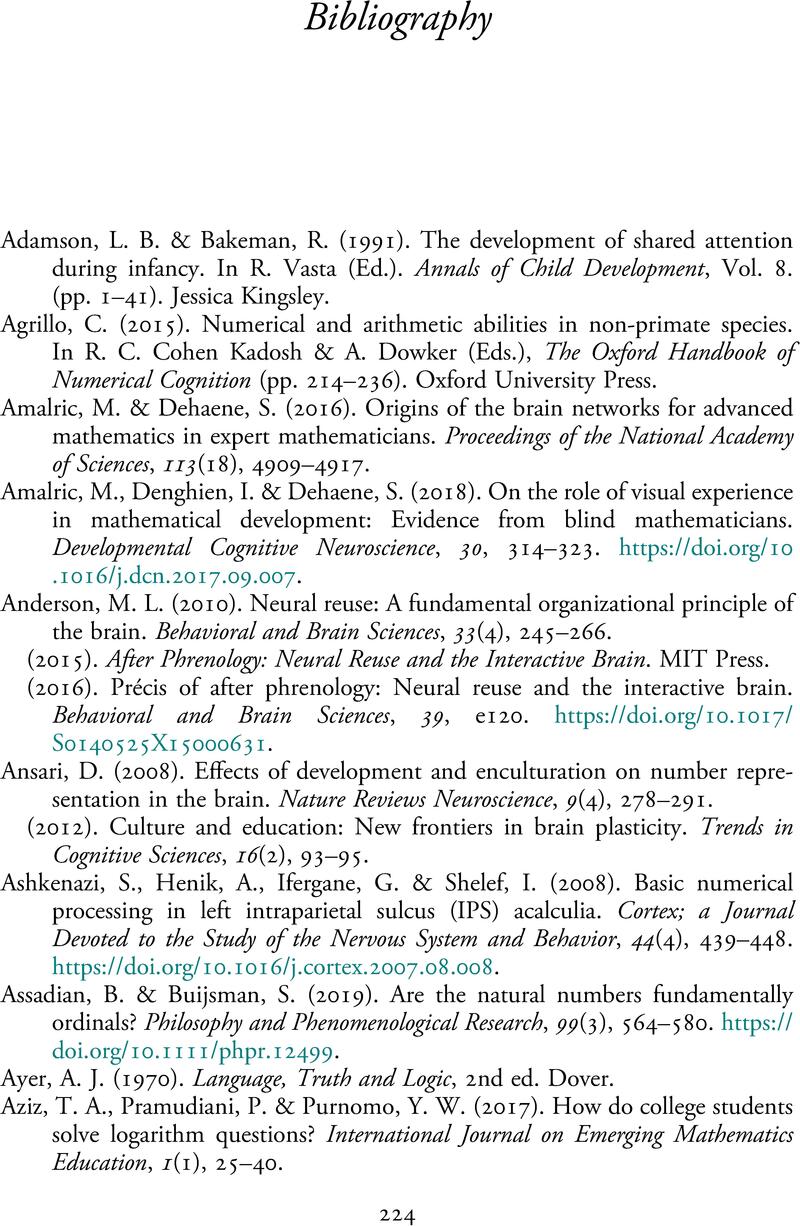Bibliography
Published online by Cambridge University Press: 15 March 2024
Summary

Information
- Type
- Chapter
- Information
- Numerical Cognition and the Epistemology of Arithmetic , pp. 224 - 246Publisher: Cambridge University PressPrint publication year: 2024
